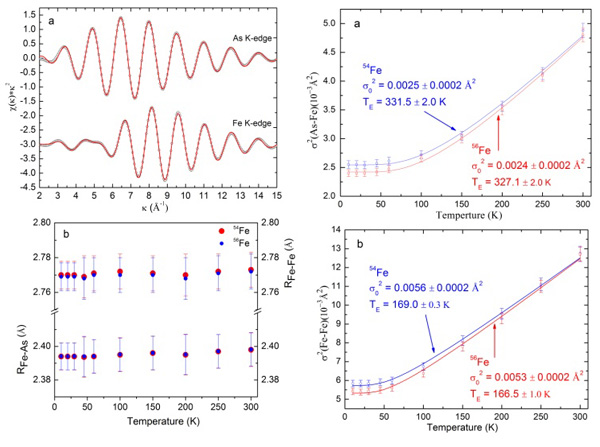Recently, a research team led by Professor Wu Ziyu from the China Synchrotron Radiation Laboratory, in collaboration with Professor Chen Xianhui's group, made significant progress in studying the isotope effect of iron-based superconducting materials using X-ray absorption spectroscopy at the three-dimensional atomic level. Their findings were published on April 29th in *Scientific Reports*, part of the Nature Publishing Group.
Since the discovery of iron-based superconductors in 2008, they have become a major focus in condensed matter physics. However, the underlying superconducting mechanism remains a topic of debate. In 2009, Professor Chen and Wu’s team first observed the isotope effect using Tc and magnetic measurements, as reported in *Nature* (459, 64–67). Building on this, they recently applied a newly developed microscopic technique based on EXAFS to investigate the isotope effect at the atomic scale.
The latest study reveals that isotope doping has minimal impact on the average structure and static distribution of Fe-As and Fe-Fe bonds, but significantly affects their thermal disorder. By correlating Fe-As vibrations with the Einstein model, the researchers accurately determined the characteristic frequency of Fe-Fe interactions. They measured the isotope effect factors for local lattice vibrations in both Fe-As and Fe-Fe bonds. These results align closely with those obtained through resistance and magnetic susceptibility measurements, reinforcing the idea that electron-phonon coupling plays a key role in the superconducting mechanism.
Furthermore, the analysis shows that Fe-Fe and Fe-As vibrations occur in different planes and exhibit nearly identical isotope effects, suggesting that these materials possess three-dimensional superconducting properties distinct from those of copper-based high-temperature superconductors.



Synchrotron radiation sources offer unique advantages such as high resolution, strong penetration, and broad spectral coverage, making them essential tools for advanced scientific research. The methods developed by Wu Ziyu’s team have enabled detailed studies of the electronic and atomic structures of superconductors, magnetic materials, and low-dimensional systems.
This research was supported by the Chinese Academy of Sciences’ Knowledge Innovation Program and the National Natural Science Foundation of China.
The AIN crystal is a covalently bonded compound with a [AIN4] tetrahedron as a structural unit, and has a wurtzite structure and is a hexagonal system. Chemical composition AI 65.81%, N 34.19%, specific gravity 3.261g / cm3, white or grayish white, single crystal colorless and transparent, sublimation decomposition temperature under normal pressure is 2450 °C. It is a high temperature heat resistant material. Thermal expansion coefficient (4.0-6.0) × 10 -6 / ° C. Polycrystalline AIN has a thermal conductivity of 260W/(MK), which is 5-8 times higher than alumina, so it has good thermal shock resistance and can withstand extreme heat of 2200 °C. In addition, aluminum nitride is not attacked by aluminum liquid and other molten metals and gallium arsenide, and particularly has excellent corrosion resistance to molten aluminum liquid.
Aluminum Nitride Ceramic,Aluminum Nitride Plate,Aluminum Nitride Shaft,Boron Nitride Ceramic Shaft
Dongguan Haikun New Material Co., Ltd. , https://www.hkceram.com